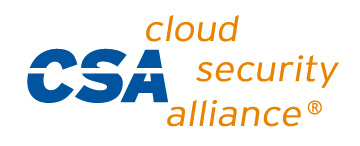
The Great Trifecta: Designing a New Playbook for Employee Experience
The Great Resignation put a spotlight on the employee experience, highlighting that it’s even more integral to talent acquisition and retention than previously thought. Today’s employees have new expectations, and employers need to pivot quickly to ensure they’re aligned with them. Lindsay Mareau, Vice President of Strategy at Phenom, explored three key essentials every organization needs to better engage, develop, and retain talent. Watch the full presentation below, or catch the highlights by reading on. “The new reality is this: the way we used to appeal and hold on to talent isn’t going to work anymore,” Mareau said. Delivering a compelling employee experience goes beyond offering a sweet office environment, 401ks, perks, and PTO. The pandemic pushed us to redefine productivity and work-life balance where “workers are constantly re-evaluating their values and what’s important to them.” Related: Designing Employee Retention Strategies for 2022 According to Mareau, these three initiatives can help HR and TA leaders forge a strong yet agile approach to the employee experience: Let’s take a closer look at these three essentials. It begins with data, Mareau said — but often, there’s so much data that companies can’t easily detect patterns of evolution as employees move between departments and job roles. Technology is critical Phenom’s Intelligent Talent Experience Platform layers contextual insights from industry segments and underutilized data sets to help organizations develop a career framework. Data is a requirement An AI-powered employee experience can’t consist of simply posting job roles on an internal career site, or passing along a login for employee training courses. Employers need to provide multifaceted experiences that help employees gain skills — while also gathering data to guide a continuously evolving and individualized journey. Here are ways to do that: Related: 6 Elements for a Meaningful Employee Experience But what if remote work just isn’t conducive to productivity or team vibes across the entire organization? Approach it this way, Mareau advises: It’s a moment for HR leaders to shine, Mareau noted. “Getting closer to the overall company mission also puts HR in a really empowering position. Not only do you now have the opportunity to coordinate closely with executive teams to see where the company is going, but you’re also the ones who will be crafting and pushing the message throughout the organization.” Here are some ways to foster a connection between employees and the company mission:
Why the old approach no longer works
Fundamental changes that happened in response to COVID-19 left the workforce with a new set of expectations — and a sense of empowerment.
Today, employees want to grow with a company, and to understand how their employer will support them throughout their career journey. “Your workers have options and agency that they likely didn’t recognize before,” Mareau pointed out.
It’s up to organizations to respond by shifting their approach both culturally and technologically to stay in alignment with employee perspectives — or risk a mass exodus of talent.
These 3 Initiatives Are Essential to the New Employee Experience
With expectations and circumstances constantly evolving, how can companies get started?
1. Build an Intelligent Career Framework
Employees need to see a clear path to growth and mobility. However, it isn’t always easy to show them that manually, considering the complexity of organizational environments and relationships among job roles.
“We rely on AI and machine learning to do that for us. This provides visibility into skills gaps and opportunities that enterprises rarely have access to. If the organization can’t develop this visibility, then they can’t pass on the visibility to the employees,” Mareau said.
“All of these ideas, as well as the data within them, is where the magic happens. This is how we design an actionable framework and experience that employees truly need and desire,” Mareau said.
2. Foster a Flexible, Safe Work Environment
In one survey that examined employee attitudes during the Great Resignation, 56% of workers said flexibility was the primary reason they were looking for a new job. The thing is, after working remotely through the pandemic, employees now know that it’s possible — and many prefer it.
3. Better Connect Employees to the Mission
Once more of a priority for Millennials and Gen Z-ers, a majority of employees across generations want to feel connected to a company’s purpose and mission.
“We need to show employees the destination, share the skills they need to get there, and connect them with the people and experiences that will help get them there faster,” Mareau said.
Kasey is a content marketing writer, focused on highlighting the importance of positive experiences. She's passionate about SEO strategy, collaboration, and data analytics. In her free time, she enjoys camping, cooking, exercising, and spending time with her loved ones — including her dog, Rocky.
Get the latest talent experience insights delivered to your inbox.
Sign up to the Phenom email list for weekly updates!









